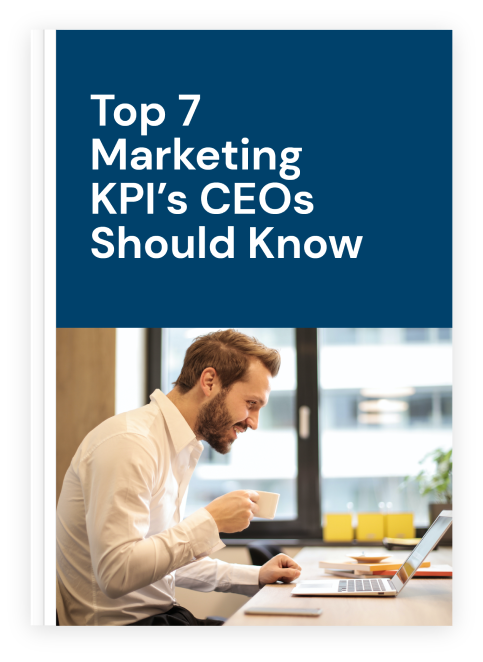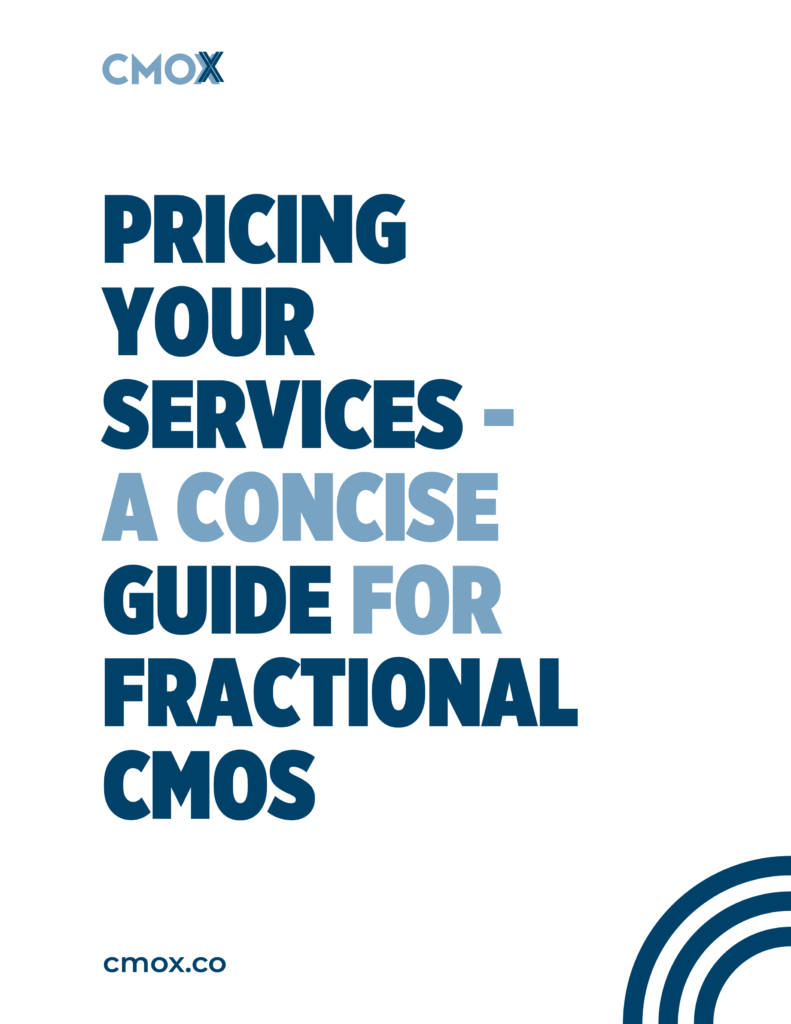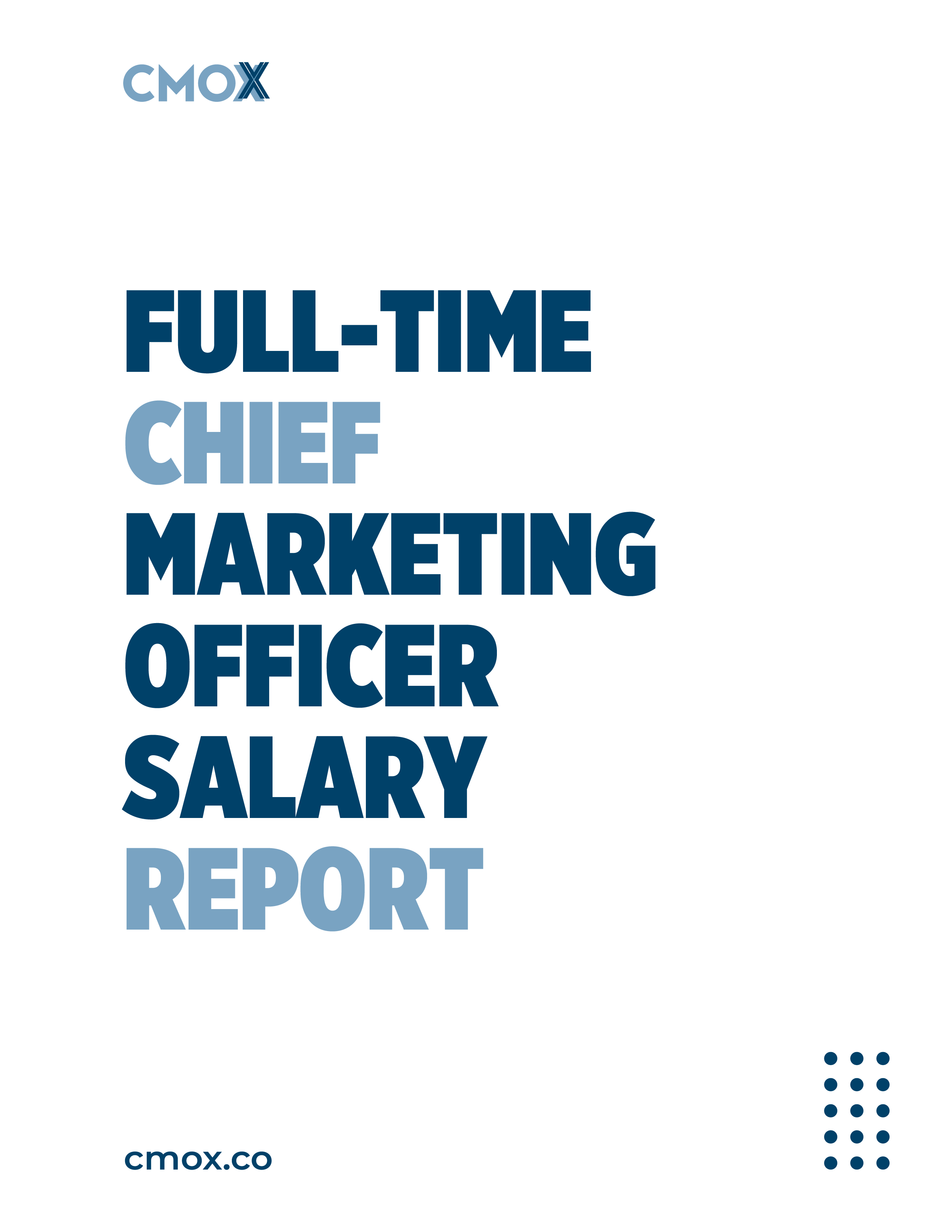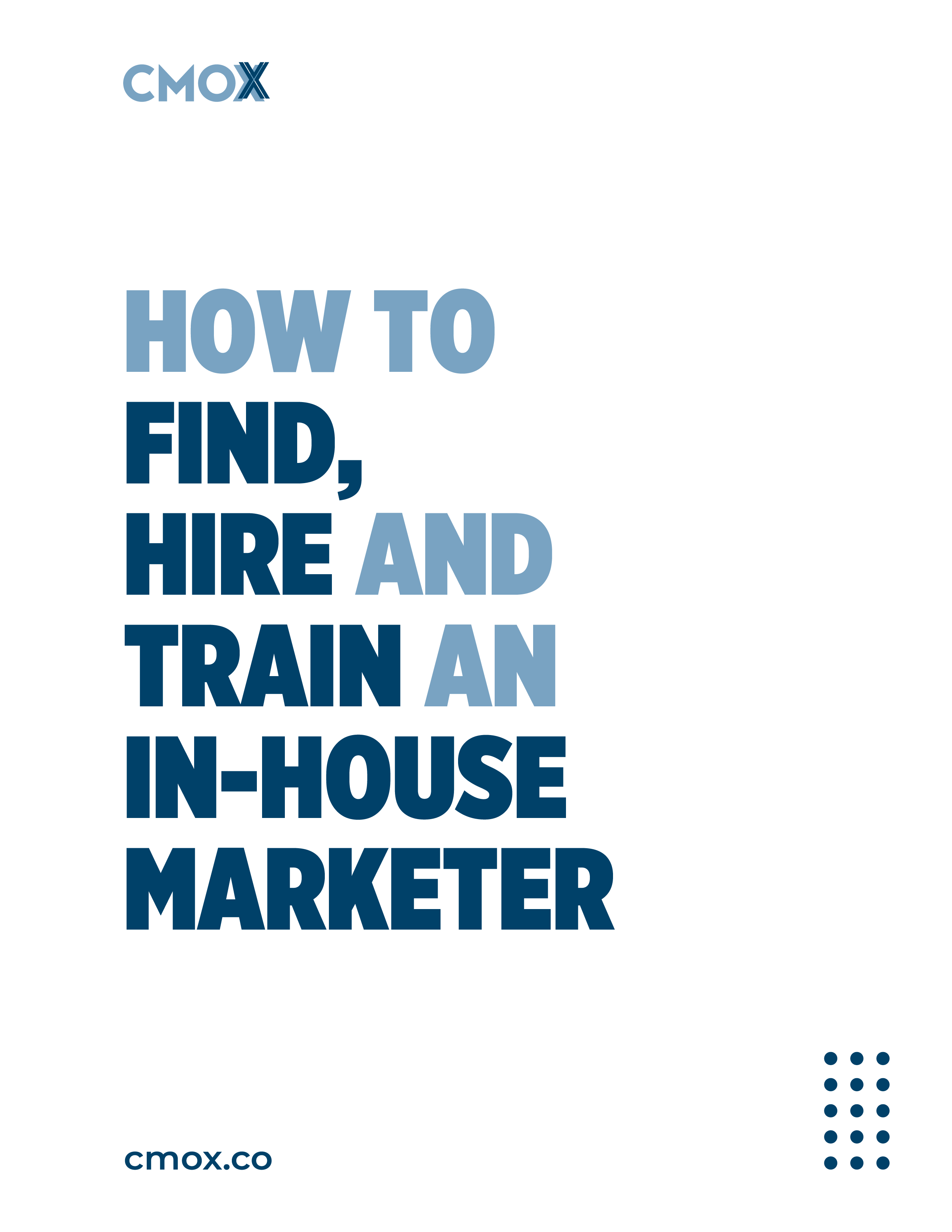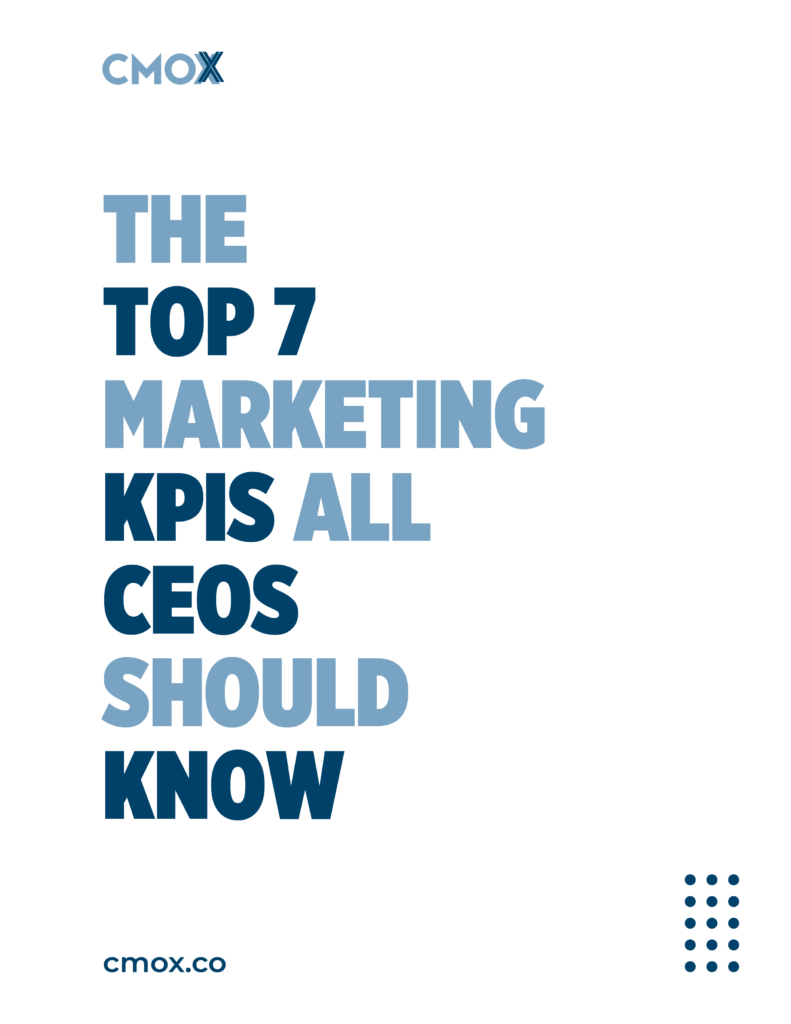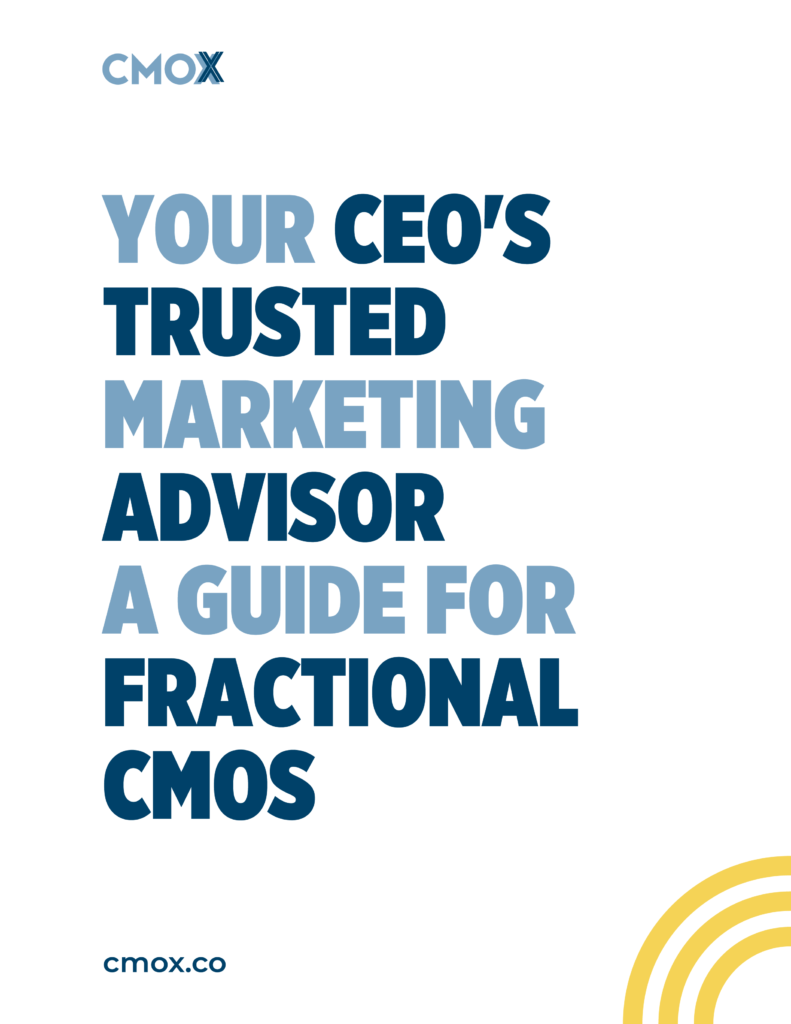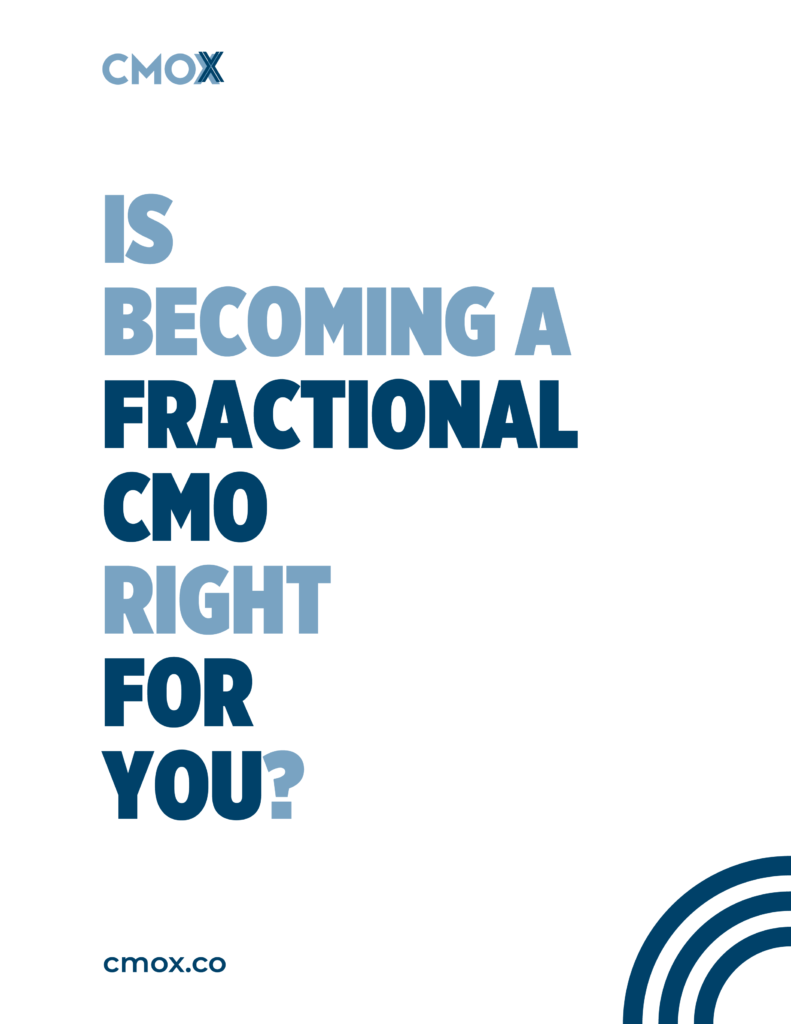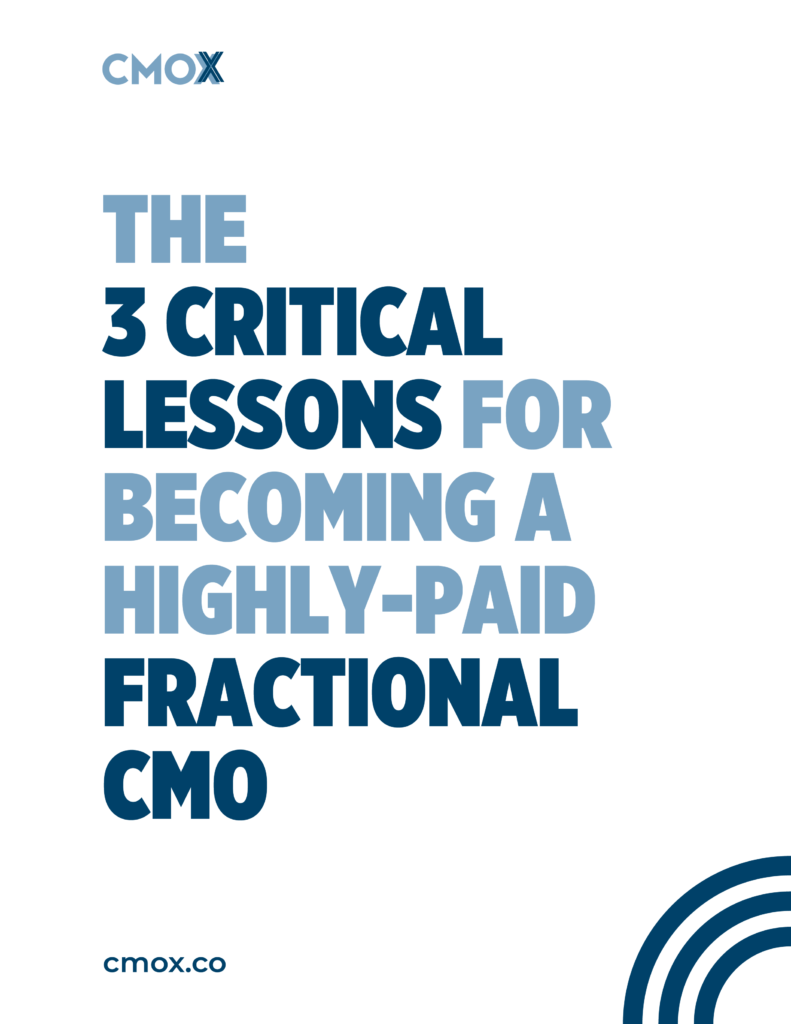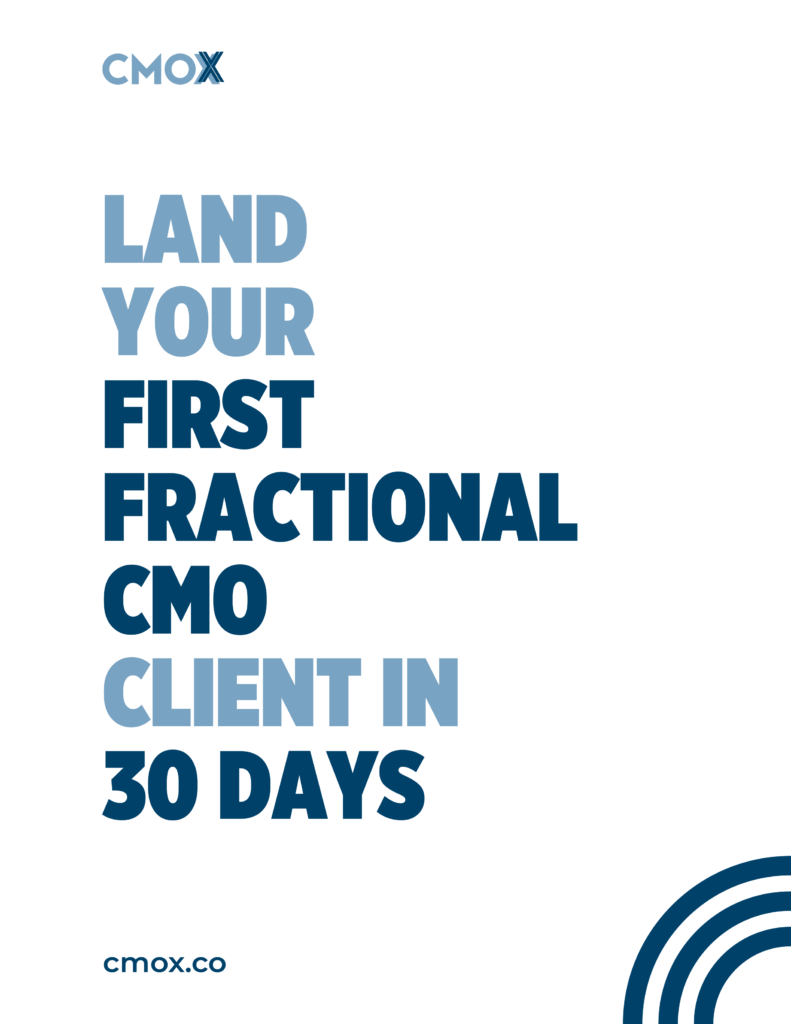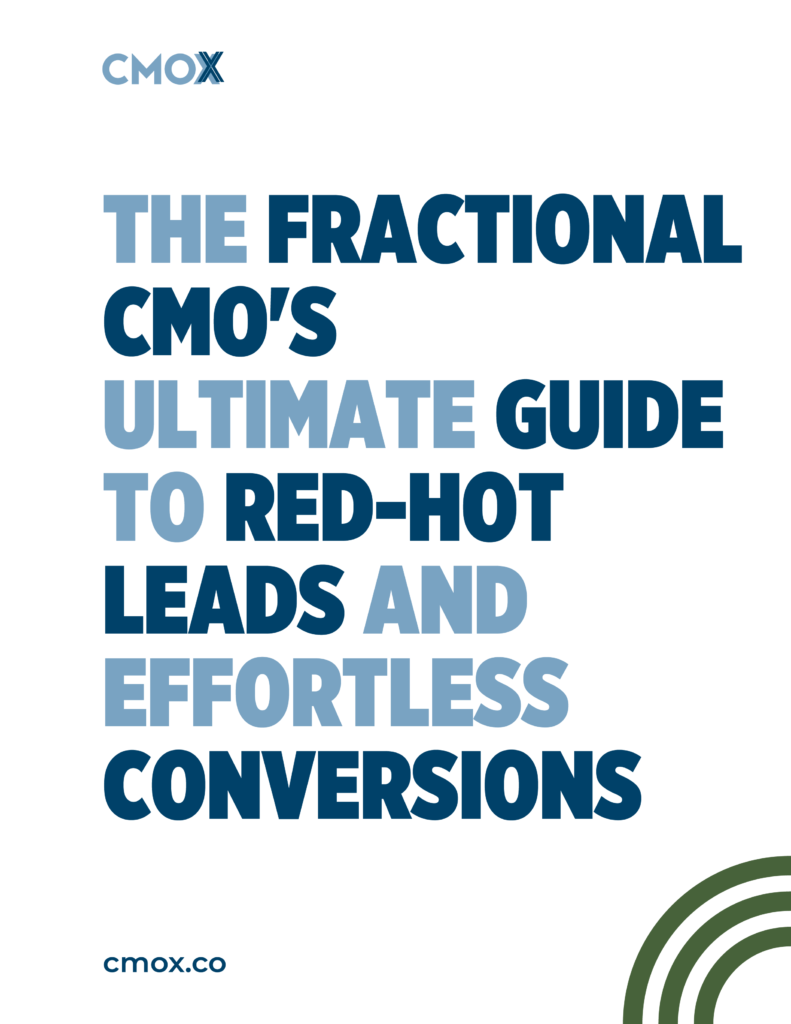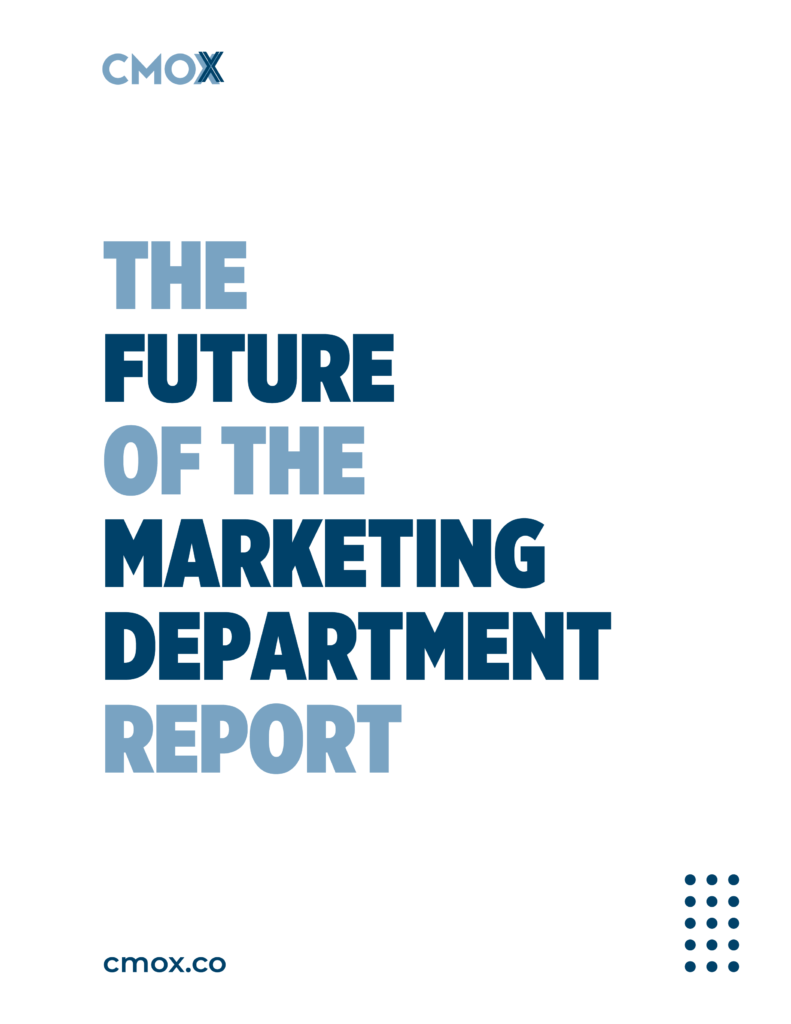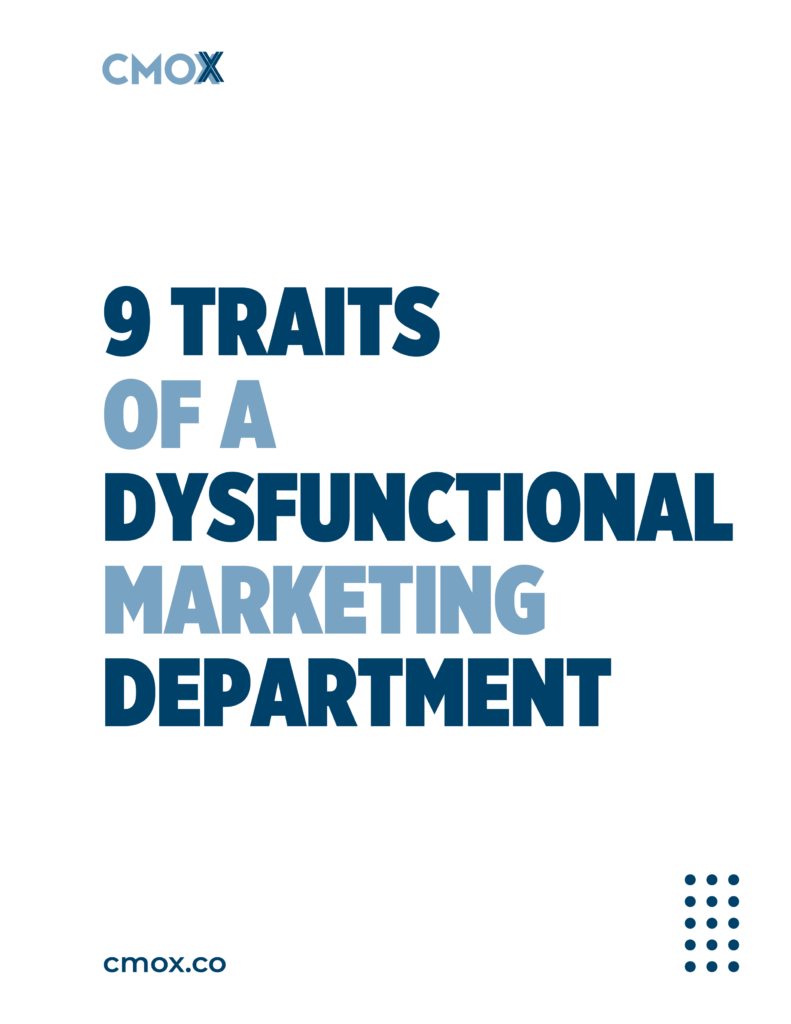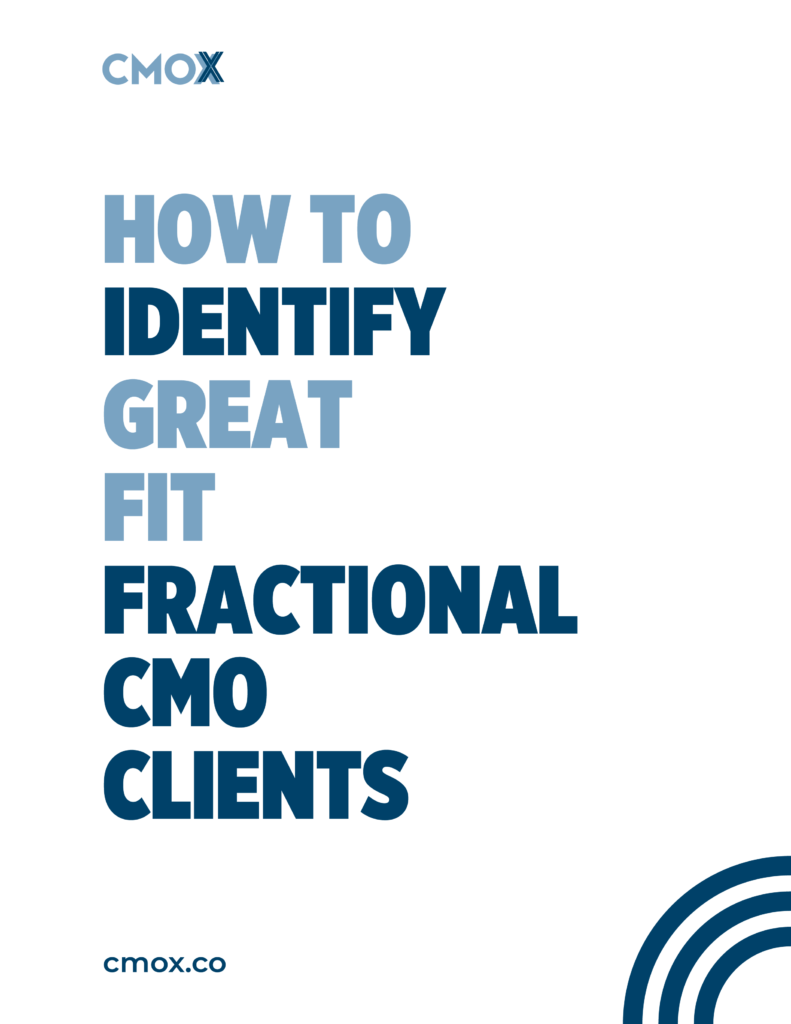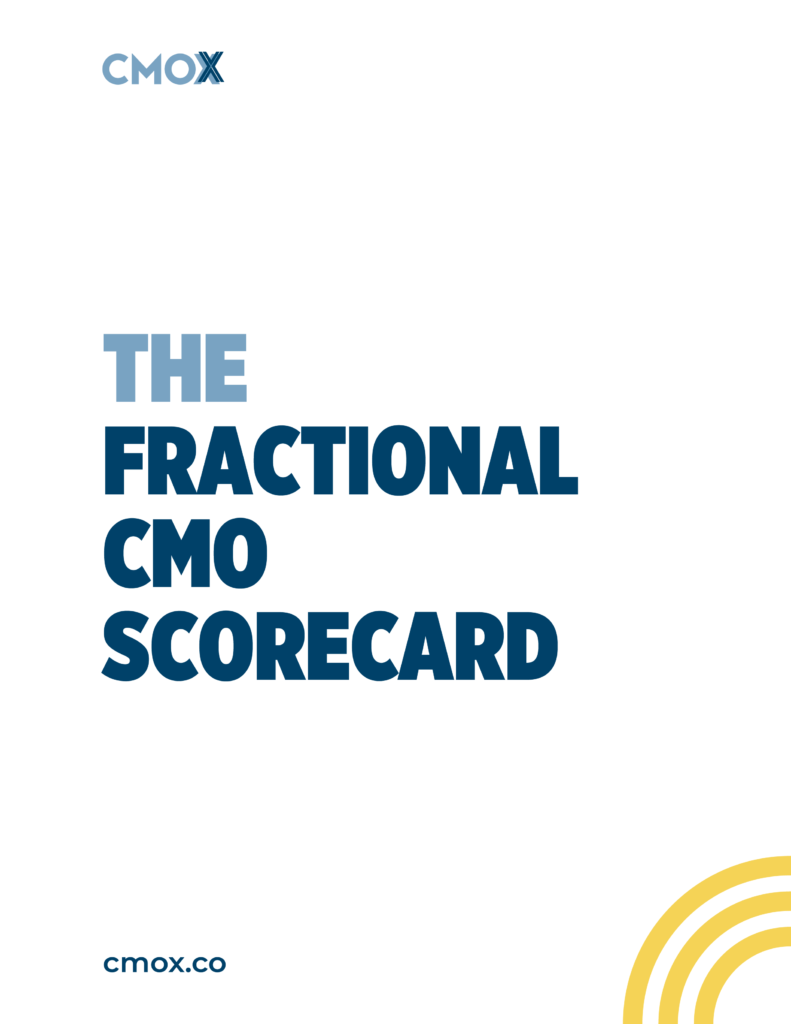Ep #107: Punching Up to the Next Level

In this episode of The Fractional CMO Show, Casey Stanton delivers a powerful mindset shift: if you want to earn more, you have to play bigger.
This episode tackles the real reason so many talented marketers struggle to land high-paying Fractional CMO clients—and it’s not a lack of skill. Casey breaks down how a scarcity mindset, fear of rejection, and clinging to meritocracy are holding you back. He shows you how to shed outdated beliefs, stop targeting underfunded clients, and confidently “punch up” to work with bigger businesses that solve for speed, not cost.
Packed with real-world examples, Casey shares why talking to strangers is the #1 growth skill, how to raise your rates with conviction, and how to position yourself as the kind of marketing leader companies are eager to invest in. This episode is your invitation to stop crawling up the ladder and start climbing the mountain.

Episode highlights:
In this episode of The Fractional CMO Show, Casey Stanton delivers a powerful mindset shift: if you want to earn more, you have to play bigger.
This episode tackles the real reason so many talented marketers struggle to land high-paying Fractional CMO clients—and it’s not a lack of skill. Casey breaks down how a scarcity mindset, fear of rejection, and clinging to meritocracy are holding you back. He shows you how to shed outdated beliefs, stop targeting underfunded clients, and confidently “punch up” to work with bigger businesses that solve for speed, not cost.
Packed with real-world examples, Casey shares why talking to strangers is the #1 growth skill, how to raise your rates with conviction, and how to position yourself as the kind of marketing leader companies are eager to invest in. This episode is your invitation to stop crawling up the ladder and start climbing the mountain.
🔑 Key Topics Covered:
- The mindset trap of “earning your way up” and why it’s costing you money
- Why marketers must punch up to win bigger, better clients
- The power of solving for speed over cost in today’s market
- How to stop undervaluing yourself—and start charging premium rates
- Why volume outreach is still king (and how to do it right)
- How to build trust fast and become the obvious hire
- The critical difference between being a technician vs. a marketing leader
- Why smaller companies often can’t afford you (and how to spot the right ones)
- Structuring client deals for upside—including getting a cut of the exit
- The new playbook for fractional CMOs: productized services, confident sales, and category ownership
Transcript:
00:00:00 Casey: In this episode, I’m gonna teach you how you can create a bigger impact for your clients as a fractional CMO, which is you get paid more as a fractional CMO. I’m gonna teach you the secrets that I tell my members inside the CMOx Accelerator so that you can dominate your market, you can win big paychecks and you can have clients that love you and wanna keep you around for years. Let’s get into it.
00:00:24 Casey: Marketers of the world, why do we work hard to solve small problems? Why do we reinvent ourselves and our clients over and over? And why are we giving away marketing strategy for free? With advancements in AI, we’re all seeing the marketing department shrink from the bottom up, and companies need you to serve them as their fractional Chief Marketing Officer. It’s time to solve bigger problems and bring home a bigger paycheck. It’s time to create the lifestyle we deserve and to make a greater impact. This is the Fractional CMO Show, and I’m Casey Stanton. Join me as we explore this growing industry and learn to solve bigger problems as marketing leaders. The Fractional CMO Show is sponsored by CMOx, the number one company to teach you how to attract, convert, and serve high paying fractional CMO clients on your terms.
00:01:21 Casey: So recently I asked in the CMOx Facebook group – so I’ve got this free Facebook group for folks who want to be fractional CMOs. It’s a great group, we’ve got thousands of members and it’s totally free. It’s at cmox.com/community. That’s how you can find it. It’s called the Fractional CMO Community on Facebook, and in it, I said, “What are your questions right now about being a fractional CMO?” And one of the questions that I received was… Like the biggest question, the one that has the most likes is like, “Where do I get clients from?” And this is an interesting question, because there’s two ways that I can answer it, right? I can answer it from just like – I can just answer the question for you. Where do you get clients from, and I can give you like a formula which I’m happy to do. But I want to tell you why that formula won’t work, right?
00:02:10 Casey: It’s kind of like saying, “How do I play the solo to Free Bird on the guitar?” It’s like, “Oh, I can go online and find the tablature and play it.” Like it’s all there, right? But there’s a difference between like seeing the tablature of how to play the solo of Free Bird versus playing the solo of Free Bird, right? And the differences is that the person who gets the tablature to look at it and study it and try to play it, it’s kind of working their way through it versus the person who plays it with a sense of professionalism, who, like, vibes with the music, who gets it, who has energy, who has emotion in it – and that’s the differentiation here, the binary. Where do I get clients from? Well, it’s easy. There’s two answers: people you know and people you don’t know. You ask the people you know if they know anyone that they can introduce you to. That’s easy, and then you find the people that you don’t know and you reach out to them and ask them if they want to talk to you, if they have problems that you can solve. That’s it.
00:03:09 Casey: So if someone says to me, “How do I get clients?” It’s like, well, you probably need to talk to the people that you know and tell them what you’re doing and then you got to go talk to the people that you don’t know and tell them what you’re doing and find people who have big enough problems that you want to take on. It’s that easy. The problem is, is that the person asking the question “How do I get clients?” inherently knows this answer. Like, I’m not coming up with some genius answer that’s never been disclosed before, so what makes this so novel and different is kind of who you have to become to be the person that goes after and gets these clients. In a previous podcast episode, I talked about prospecting and always be prospecting, like living a life of constant prospecting, always be open to conversations, never turn off the faucet of opportunity. Like I always want to talk to strangers. I want to talk to strangers all the time. I’m walking with my wife and kids the other day, I walked by a plumber and I was just like, “Hey, man.” He’s like in his car smoking right in his truck.
00:04:02 Casey: It’s like, “Hey, quick question. Sorry. My shower drain, it’s clogged – it’s doing this thing. Just like, what do you think? Should I call someone or what?” He’s like, “No, go down to the supply house, get this bottle, put it in.” I did it, it solved the problem, saved the day, right? Awesome. And that was talking to strangers. That’s just a behavior of talking to strangers, asking questions, just shooting them a shot. He could have been awful, he could have been mean. He could have not been helpful, he could have misled me. There’s a bunch of possibilities, but he was just like, “No, let me draw for you and the bend in your pipes with your shower to your toilet to your sink and what’s happening and why I think it’s this problem and not that problem.” It was awesome. It’s this opportunity of just talking to strangers that delivers the most value in your life, I guarantee it. Like, focus on what you want and then talk to enough strangers. The people who say, “How do I get business?” oftentimes are unhappy when the answer is volume. It’s just volume. Yeah, there are better rooms to be in, right? If I want to raise money, is it better to go to Subway and talk to people that are eating a sandwich, or is it better to go to a get together of private equity folks in my city? Like which one’s better?
00:05:09 Casey: Obviously going to where the private equity folks are is better, but it’s still about volume. You don’t go to the private equity meeting and just say, “Hey, what’s up? Like, can I have some money? Can I get in business? Can you hire me or whatever?” It doesn’t work like that – it’s volume. It’s building it and it’s conversation. It’s a relationship, it takes time. However, there was one major fault and that’s what I want to dive into today, of what people don’t do when it comes to their prospecting and if they don’t reach to the next level above where they are. I don’t understand this. I mean, I kind of do but it feels so weird. I see men do this and I see women do this. What it looks like is someone will come into the accelerator and they’ll have this belief. Like, they were someone in their professional life previous. Maybe they got laid off, maybe they’ve got a little too much gray hair and they’re finding it difficult to get a job. Ageism is very real. I see it all the time. People come in with a ton of experience, great CMOs, great marketers. They can’t find work traditionally because someone without gray hair is cheaper.
00:06:10 Casey: These people come in and they say like, “I was making X a year.” So I’m just going to pretend, I’m going to think of someone. They were making like 250 a year, solid income as a VP of marketing or a CMO at a company. And then they say, “Okay, cool, I’m going to go to this fractional thing. Casey, I’m going to join the accelerator.” Okay, so here’s what I’m thinking. They say to me, “I think I want to charge like 1000 bucks for the first client per month. And then like the next client, I want to be like 2000. And then maybe the next client like 2500, and then like 3000. And then like, I just want to like work my way up to someone paying me 7500 or 10,000 or $15,000 a month or more.” That’s what I want to work my way up to, and they live in this world of meritocracy where they have to be at this next level. Like they have to spend the time at a low level to earn their way to the next level, to the next level, to the next level.
00:07:02 Casey: Yet at the same time, they just left a company that they were making a quarter of a million dollars a year from and it’s just this weird thing that some folks have in their mind. And I want to tell you that that is a rule that they’ve created for themselves that’s allowing them to lose. They’re literally writing the game instructions, like how do I play the game? What are the rules for this game I’m playing as a fractional CMO? And they write rules that mean that they can’t make a lot of money, they can’t work with great companies and financially it’s gonna be really tough for a while until they earn their way. So I’ve got those folks, and then I’ve got folks on the opposite side who are just like, “I’m gonna charge more than I would have charged before.” or, you know, “I’m gonna try to get my next biggest check from the next person I sell.” Those people are cool too. They often miss this one thing. Let me tell you what it is. The thing that they tend to miss is they don’t punch up to the next level of business size. So here’s what it looks like – they’re working with traditionally a company that’s doing $5 million a year in revenue and they want to come in and charge $10,000 a month, and that company has small margins. They have 5% margins, 10% margins…they don’t have a lot of margins.
00:08:13 Casey: And you want to go take $100,000, $120,000 a year out of that for growth? For some companies, they’re positioned well for growth. Maybe they know that some revenue is coming in in the next year or two or whatever and they’re going to be eager to hire. Okay, but by and large, smaller companies can’t afford you. And if they can, it comes at you having to deliver such an outcome that is so potentially unlikely that they’re no matter what going to be frustrated with you because you’re not going to deliver – because it’s like impossible to deliver, yet you’re gonna sell because you’re in front of them and you want the business. I get it, but I want you to be in a position where you’re punching up to the next level. I want you to play bigger. What’s beyond where you’ve been comfortable? For some people they say, a $1 million a year company, a $2 million a year company, a nonprofit that’s doing like $650,000 a year. Just know you can’t do those as a fractional CMO because there’s no margin for you. Caveat, it works if they’re in growth mode, if they are well-funded, if they just got an investment fund, if the CEO is independently wealthy.
00:09:18 Casey: Like, there are some caveats where it can work, but by and large, smaller companies tend to be incapable of affording a fractional CMO, affording a marketing department, affording the media that’s required to buy the traffic to get the result. They can’t afford the team, they can’t afford the tools.
00:09:38 Casey: So you have to punch up to that next level and play bigger. When you do this, what happens? Oftentimes, there’s just more money at play. I worked with a company, and we were spending 10, 20, some days even $30,000 a day on paid ads. If I just made sure that we didn’t have one bad day a month, what’s that worth to the company? Everything I was charging them, right? One bad day?
00:10:07 Casey: They don’t have one bad day. They feel a sense of extra confidence because they now have someone that’s overseeing everything and making sure that’s fixed. I’ll tell you, I had one bad day over the course of that contract lasted a couple of years. I had one bad day. It was, it sucked, right? We drove traffic to a landing page, but the landing page URL was, it had a typo in it. And that drove us to a 404 page, and it wasn’t even a good 404 page. It was like a WordPress default 404 page.
00:10:36 Casey: So we didn’t capture anything. So we just threw away like over $20,000 sucked. It was a real bummer. I felt real bad because I didn’t notice it, because in the morning we were fine. But then the page got updated, the ads got updated mid-morning, and I didn’t find out about it until the following day when the team and I got on a stand-up, and they were like, Oh my god, this happened and everyone’s scared for their job. They’re frustrated. They’re embarrassed. They’re upset, right?
00:11:03 Casey: So I got to go to the executive leadership team and tell them, hey guys, we screwed up. First of all, I figured out what the problem was. Someone launched it, there was no QC in place. This is an EOS kind of core belief, which is either there’s a process and it wasn’t followed, or there was no process. And in this situation, the process to QC existed, and it wasn’t followed. So, someone hit go live before the QC happened. So I can point the finger that person said you failed to follow this process.
00:11:31 Casey: And then I can work on that, right? I can help that person follow processes. And if they fail to follow processes, I can get them out and replace them with someone who can. But I had to go to the executive leadership team that morning, right, and early and be like, guys, we blew it. We blew yesterday’s ad spend on you know, they were like, how you know, how’s the new offer? And I say terrible. None of the none of the traffic went to the right landing page. They all went to a 404 page, and it sucked. And people were like, damn, like they were not happy, right?
00:12:00 Casey: One of the co-founders turned to me and he goes, Casey, have a short memory. Keep your chin up. Keep going. Keep fighting. So he said to me, keep going. Keep fighting. But that line have a short memory was so helpful. Like, there wasn’t time for me to feel a sense of shame. It’s like problem. Yeah. They’re like, you got it, Casey. Can you fix this problem? I was like, yeah, like this won’t happen again. They’re like, cool. Go.
00:12:31 Casey: Like we’re spending $20,000 a day. Don’t let this mistake that happened yesterday be a mistake that happens today and tomorrow and the next day, right? Just isolate this to a smaller incident. $20,000 in wasted ad spend for another company could have absolutely crushed their marketing spend for the quarter or for two quarters or something. So when you play a bigger game, you start solving for speed instead of solving for cost.
00:12:58 Casey: And I got to tell you, it’s so much more fun to solve for speed. Why do executives fly private jets? Is it because they’re luxurious? I mean, not really. I don’t know. I feel like an airplane seats an airplane seat, right? Maybe it’s a little wider. Maybe, you know, they don’t have other people coughing on them or babies crying or whatever. I don’t know. But at end of the day, they fly private because it’s faster, because they solve for time. So they just drive to the airport, you know, to the FBO, they hop out.
00:13:27 Casey: They walk into the plane, the plane takes off, and it lands, they walk out, they’re in their car, boom, and then they’re at the meeting. They solve for time, not cost. To you and me, maybe we think how much did that flight cost? That’s ridiculous. You shouldn’t spend that much money, whatever. To them, they’re like, hey, I got two meetings done today across the country instead of one. It’s worth it for me. Fascinating, right? So the bigger the problem is, the bigger the client is, the bigger the potential impact is for you, the more money that’s available, the more that they’re gonna solve for speed versus cost.
00:13:59 Casey: So again, you can raise your rates because they’re not solving for cost, they’re solving for speed or protection, safety, focus, opportunity. I worked with a company during kind of the prime of low interest rates during COVID. And we all knew that those low interest rates were not going to last forever. So for us, it was all about speed. Let’s spend as much money as possible in the short amount of time when money’s cheap, because we know the Fed will increase the rates, and we know it’ll be harder to get loans.
00:14:29 Casey: So let’s just go hard right now. And we did. And every day that we lost to, you know, malfunction, or team losing focus, or a team member leaving or going on medical leave or a pat leave, or mat leave, or whatever, that slowed us down. My job was to ensure that we didn’t slow down. And I gotta tell you, it’s fun when you solve for speed. I would say it’s more fun.
00:14:53 Casey: Nobody wants to save money. Right? I don’t think anyone in history has ever been like, you know what, I would prefer to live on a budget. I think everyone would prefer to have unlimited money and do whatever they want. So budgeting is a requirement of a successful fractional CMO, which is a successful CMO. And I would rather the budget not be as important. I’d rather have a large budget and not even need it all. How fun is that? It’s more fun. I can bring in people.
00:15:23 Casey: When I bring in people that are solving big problems with me, they wanna move fast too. That faster movement creates momentum. That momentum gets me excited. Like I feel it in my body. I’m on with them. It feels like game day. You know, it’s like we’re having fun together playing the game, and we’re all focused. When I’m focused on something very directly, I’m very good. And when it starts slowing down, checking my phone, I’m playing around, going for a walk, I’m hanging out with my kids, like I’m just not as focused. And my work product isn’t as good. I would rather professionally be focused for a short amount of time, like three hours, two hours in the day, for like the launch of something, or you know, whatever, just like focus hard, do it, and then be 100 % done. Way more fun. And I think you’ll find that too. So with that faster movement, these opportunities become bigger. But then the opportunity to exit exists.
00:16:26 Casey: Nothing looks better to a potential buyer of a company than rapid growth with low costs. That’s what they’re that’s what they’re looking for. They’re looking for like rapid growth that they believe can continue. And they look for low cost to achieve that growth. If you’re able to deliver that because you’re not a full time CMO charging full time rates, therefore you’re keeping the cost of headcount down using marketing technicians instead of over titled marketing folks using AI tools to augment the team so that more people can get there, you can get more done with less people. If you’re doing all of this stuff and kind of like living the ethos of what I’ve described and the CMOx kind of way of being a fractional CMO, you’re creating a better exit opportunity for your clients. And that’s amazing for them. With those exit opportunities, you get the opportunity to get a piece of it.
00:17:19 Casey: You know, there’s like not a lot of people in a business that have the opportunity to say, hey, CEO, let me in on some of this exit value. You get like just the early employees. Who else do you get? Do you get the C-suite they’re in on it? Obviously, the board probably is in on it. Anyone who’s invested. But you, you’re the fractional CMO. Should you get in on it? I think hell yeah, you should. I think you should be able to stand up and say, hey guys, I can do some magic here that changes the math on what you’re I can think of like if a company is going and doing acquisitions, hey, we’re gonna go acquire a company and then three months later, we’ll acquire another one and another one and another one, whatever industry.
00:18:00 Casey: This could be in plumbing. This could be in financial advisors. Like they buy up the book of business of advisors that are retiring or whatever, right? If you come in, you know that they’re growing their revenue, and that increases their valuation because the more revenue you have, the more valuable your business is.
00:18:18 Casey: But then with marketing, you’re able to create longer term customers. You’re able to get upsells. You’re able to get customers from different traffic sources. You’re able to generate new video ads that they never had the assets or the team for, the capabilities for, and you’re able to deliver outsized results. You’re able to change the math for your clients so that you can wave your hand and say, if I make this come true, cut me in on the exit. Write me a check at the exit for this amount of money. Is that fair? And if it’s fair for them and fair for you, then go for it.
00:18:51 Casey: You’re not gonna get that with small clients. You’re not gonna get that with a client who says, hey, we can afford to pay you, but we’ll give you equity in this company. You know what I say? Skip me with that equity. I don’t want equity in anyone’s company. I don’t. I want a part of their revenue. Give me part of your revenue every single month. That’s cool. I don’t want equity. Equity may never earn into actual cash in my pocket. So I feel like I own part of the company, some minor share that never comes true. I don’t want it. I want cash in my pocket. I want to take some risks. I want to work hard. I want to solve big problems. I want to have fun with people. I want to build a culture of like, we do whatever it takes. We get in the foxhole together. We deliver world class stuff. We’re all proud of it. And I want to get cutting on the exit.
00:19:38 Casey: Why not? It’s an opportunity that you almost exclusively have as a fractional CMO. Full time CMO, I mean, you kind of get those equity points, right? As the fractional CMO, you come in and you say, hey, I want to get paid in this different way. We’ll talk about that in the accelerator, different ways to get paid, deferring income, getting upside in different ways, that kind of stuff. And it’s kind of on a deal by deal basis. By the way, if you join the accelerator, you get unfettered, unmetered access to me for deal making with your clients. So kind of a cool thing. I’ve had a couple really fun conversations. One after this podcast I gotta get back to, with one of our members who just landed a very cool meeting with a very cool person. And they want some help figuring out what kind of deal they want to structure. We have other members that are swinging really neat deals where they have upside that’s in the tens of thousands, hundreds of thousands and one that’s in the one to $2 million. It’s very real.
00:20:37 Casey: So fun, right? That’s where you can be as a fractional CMO. You have this opportunity to kind of come in almost tangentially. I don’t apply through the front door. Back to the thesis of this episode, which is like, how do I get clients? The answer isn’t through the front door. The answer isn’t applying. The answer is going after people, asking them if they have specific problems, and if they do, offering to help them in a way that makes sense for them and aligns with them and fits them into a productized bucket so you can service them in a way repeatedly at a high level of quality. And if you do this, and you continue to do this, this year, right, you’re gonna get started and you’re gonna be inefficient. Join the accelerator. Win your clients, build your business, follow our processes, do it without the errors. Think about where you’ll be in a year. Think about where you’ll be in two years.
00:21:31 Casey: You’re gonna be able to create such a possible avalanche of value that you provide, that no one else provides because you’re focused on these companies in a very special way. Companies will pay for you to come in to look at things and be like, what’s wrong? And you’re like, oh, that’s fun. Let me dive in and figure it out. And you figure it all out and tell them these are all the things that aren’t working. This is what is working. Here’s what I think you should do next. And they’re like, cool, can you help us? You’re like, yeah, let me build the team. Let me get them to focus on the problems. Let me take this whole marketing spend that you have on headcount and tools and on ads and let me just…can I just have that budget to reallocate how I see fit to people and tools and stuff to make your dreams come true? I’m like, yeah, do it.
00:22:11 Casey: So they’re out, you know, in that example, no extra money, you get a big budget to play with, and you can deliver huge outcomes and value to them. Because no one has ever sat on top of it all as the chief marketing officer to oversee the function of all marketing. They’ve only had people on the sides just saying, oh, I’m the Facebook person. Oh, I’m the landing page person. I’m the analytic person. I’m the developer who’s not available. I’m the designer who is too expensive, right? As the CMO, you get to find and build the right team. It is a ton of fun.
00:22:42 Casey: So what I want you to walk away from this episode with is a belief in yourself that you can move up to the next level, punch up without meritocracy. You don’t have to go from the level you’re currently at to a level 10% above and then 10% above and then 10% above and then 10% above. You don’t have to do that. You can just go for the level that you want to go for. It might take you longer, because you got to talk to more people, you got to have more at bats to find the right person, but you will find them. So the secret isn’t that I’m withholding some secret strategy to get clients. The secret is that you need to become the kind of person that can deliver the kind of value so that when you talk to someone who has a problem, they see you as the expert, they don’t question it, they don’t ask for a reference, right? They don’t ask to talk to other clients that you’ve worked with in the past. They don’t need that stuff because they’re like, damn, you’re the right one. You’re the real one. And they’re going to hire you for the confidence and safety of the decision.
00:23:36 Casey: Remember at the end of the day, executives don’t hire us…the reason that they hire us is because they want to be done thinking about marketing and they want an expert to take over. And then they want to have a conversation with that expert every week or twice a week or every other week or whatever. That’s what they want to have. Right now, they don’t trust marketing. Marketing is a waste of money or marketing is a huge opportunity and they just want it solved. These executives have so many other problems to work on.
00:24:02 Casey: I was talking to a business owner yesterday and he said, after this call, I’m gonna go talk to this person and I have an opportunity to make a million to a million and a half dollars on a deal. Without me in that position to support him on the marketing side, he loses the afternoon and he can’t go make that deal. Or he loses dinner with his family and kids because he can’t make that deal. If I just focus just on the marketing stuff and free this guy up from all the other things, he gets to do the thing that’s valuable and in his unique ability, to use Dan Sullivan’s term, to deliver the most value in his life. He knows marketing isn’t the most valuable thing for him. He’s just at a different place, right? Marketing supports him, but it doesn’t define his value. His value is in deal making.
00:24:50 Casey: So don’t forget this stuff. You’re not one trick away. You’re not Russell Brunson’s one funnel away from XYZ. It’s not that. You’re not the person yet that deserves high paying clients that give you great budgets that have big problems because you haven’t positioned yourself effectively. You can’t talk the talk, you don’t know who you’re selling to, you’re selling to anyone with a pulse. But when you clarify that, that’s when people start looking at you and be like, oh, you’re that person, you solve those problems, let’s chat, I got a perfect project for you.
00:25:25 Casey: So if you want my help doing this, I want to help you get sales ready, which is like knowing what you’re selling, being able to sell it with confidence, getting your website, your LinkedIn, all that kind of stuff all figured out, right? Getting your messaging right, being able to tell a persuasive story that says, yes, you’re the right person for the job. If you want my help in that, and then my help in getting your first $10,000 a month of recurring business as a fractional CMO, and then growing beyond that and getting additional clients that are paying you $5,000 to $12,500 or $15,000 a month or more with upside even if you want. If you want my help, if you want to be in the community of other people who are actually doing this work, let’s chat. Just book a call with my team. It’s at cmox.com/call. Just book it a call and chat with my team and see if you have what it takes to be a successful fractional CMO.
00:26:13 Casey: We know what it takes. We don’t let everyone into the accelerator. If we let you in, my expectation is that you show up and do the work and that you’re going to be successful. All right? And I really mean that. I want to see every single person in the accelerator successful. And I’m going to push them to uncover the things that aren’t working for them, the things that are slowing them down, the excuses that they have, whatever it is, so that they can be focused on generating value for their clients, winning clients, making great money, having a great lifestyle. You know, not working on Fridays, working 30 hours a week and making a really great living. That’s what’s possible right now as a fractional CMO. All right, book that column for my team if you want my help. Otherwise, I will see you on another episode. Take care.
00:26:57 Casey: Thank you for sticking around for the full episode. As you know, learners are earners, but you’ve got to take action on what you heard today. For more information and show notes, visit fractionalcmoshow.com. If you’d like me to answer your questions on an upcoming episode, you can share your question at fractionalcmoshow.com. And last, please hit the like and subscribe button so that I know that this content is helpful to you. All right, go get them.
Join Our Community
We are excited to announce the Fractional CMO Community Facebook Group. This aims to be a place where Fractional CMOs or marketers considering becoming a Fractional CMO can connect and share ideas.
Locations CMOx® serves
- New York
- Philadelphia
- Los Angeles
- San Francisco
- Chicago
- Houston
- Dallas
- Austin
- Miami
- Atlanta
- Denver
- Boston
- San Diego
- Seattle
- Portland
- Minneapolis
- Milwaukee
- Detroit
- Phoenix
- Washington D.C.
- St. Louis
- Toronto
